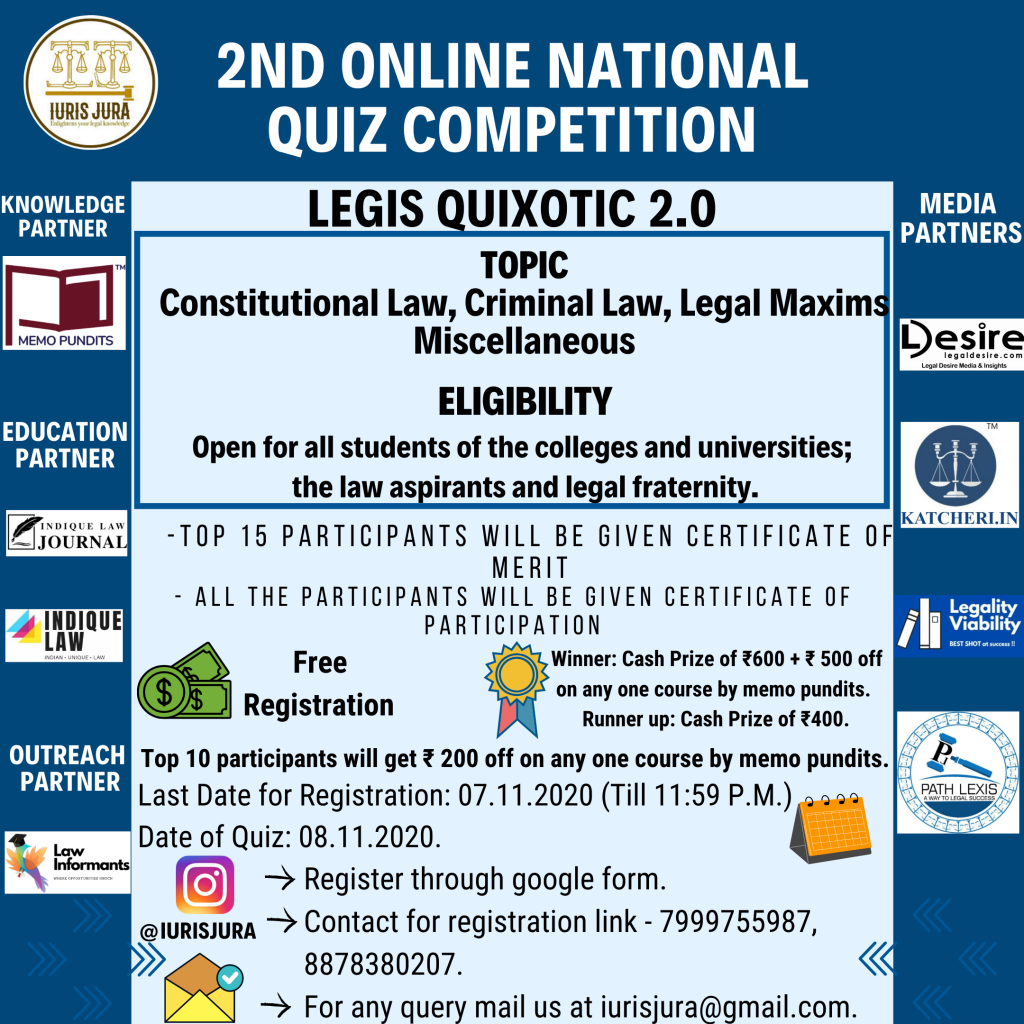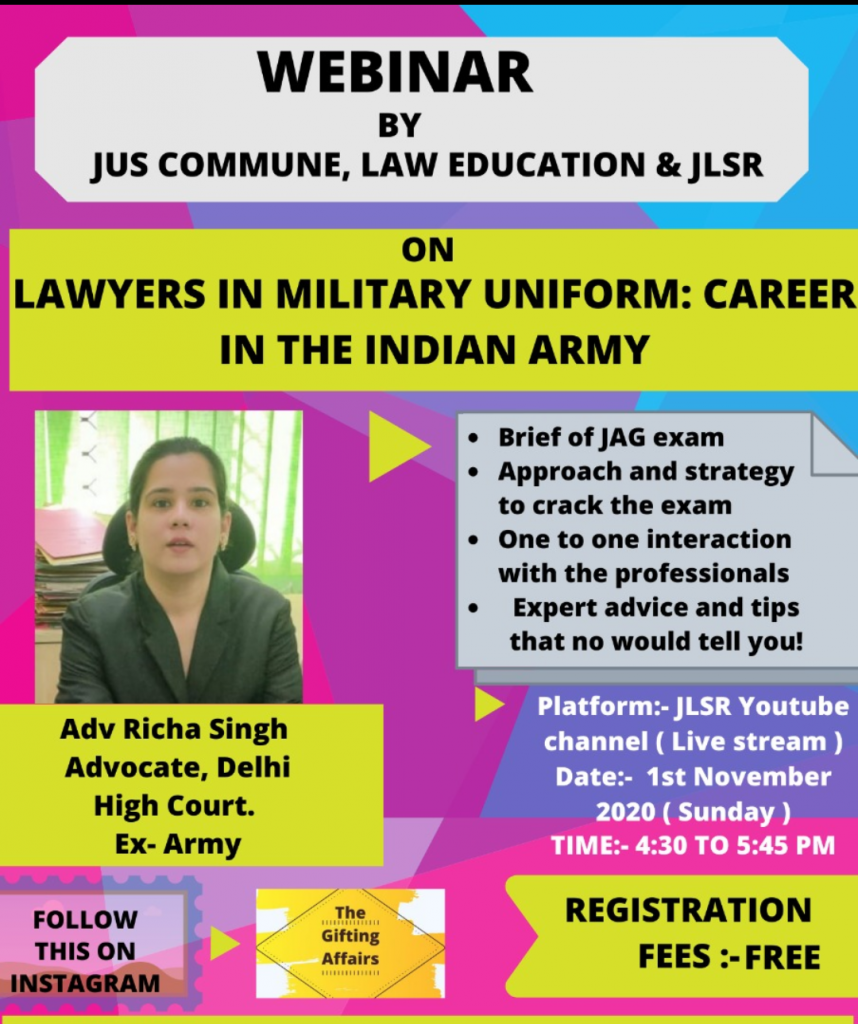About the Website:
Iuris Jura is an e-learning platform for legal learning aspirants which provides opportunities to all the law aspirants across India. We have put an effort so that the law aspirants and the legal fraternity can associate with us.
About the Competition:
Iuris Jura invites all the participants across the nation to participate in its 2nd Online National Quiz Competition LEGIS QUIXOTIC 2.0 on Constitutional law, Criminal Law, Legal Maxims, and Miscellaneous.
Eligibility:
- Open for all students of the colleges and universities;
- The law aspirants and legal fraternity.
Composition of Quiz:
1. CONSTITUTIONAL LAW
2. CRIMINAL LAW
3. LEGAL MAXIMS
4. MISCELLANEOUS
Who shall apply?
- 1st and 2nd-year law shall apply as these are the opportunities that give them exposure.
- All the students preparing for law entrance exams.
- All the law students trying to bring laurels to them.
- All the students who are willing to check their command over the law.
Note: This is just a suggestion from our side to everyone reading. It has been seen that in this hard time, students are panicking and doing everything and anything just to add on to their CV/Resume, even the things that are not going to add so much value to their CV’s.
Rules and Regulations:
- The Quiz will comprise 40 MCQs to be attempted in 15 minutes.
- There will be no negative marking.
- Participation as a team is not allowed.
- Participants are required to attempt the quiz at one go.
- In the case of a tie-breaker between the winner and runner up, a tie-breaker round consisting of 10 objective questions shall be conducted for deciding the winner.
- Participants will be provided with the link to the WhatsApp group after the submission of the registration form through the mail.
- Participants shall ensure decent internet connectivity and are advised to be online at least 15 minutes before the quiz begins.
- If the participant faces any technical issue, it shall entirely be at their responsibility and organizers owe no liability/responsibility towards the same.
- The decision of the organizers shall be final and binding in relation to any matter connected with the quiz competition.
- All the participants are advised to regularly check their emails and the WhatsApp group for regular updates with regard to the competition.
- If any participant is found to be indulged in any type of misconduct, he/she shall be disqualified from the quiz competition.
- All certificates shall be in digital form i.e. E-Certificate.
Important Dates:
- Last Date for Registration: 7th November, 2020 (Till 11:59 P.M.)
- Date of Online Quiz: 8th November, 2020 (05:00 P.M.)
- The Dates provided are subject to change at the discretion of the organizers.
Rewards:
- Winner: ₹600+ Certificate of Merit+ ₹ 500 off on any one course by memo pundits.
- Runner Up: ₹400 + Certificate of Merit
- Top 10 participants will get ₹ 200 off on any one course by memo pundits.
- Top 15 Participants will get Certificate of Merit.
- All the participants will be given certificate of participation.
Registration:
There is no registration fee.
Register for the quiz by clicking the link mentioned- https://forms.gle/8rmje94zncf5uzTE9
The successfully registered participants will be provided with important guidelines and details to participate in the quiz via mail or WhatsApp.
For any query mail: iurisjura@gmail.com
For more such opportunities visit: http://lexpeeps.in/

